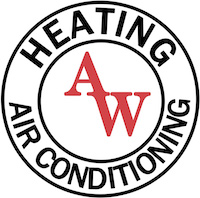It’s always nice when we manage to save money on our utility bills, but it turns out there’s a way to lower energy use, even when you’re not even home.
It starts with your thermostat. By learning more about its special features and settings, you can help the thermostat plan for your preferred temperatures. You can create a number of automated temperature settings for when you’re home, away or even when you’re asleep.
By trying a few of these schedules, you’ll be able to enjoy comfortable temperatures while cutting down your energy bills. Take a look at a few ways your thermostat doesn’t have to use up all your summer spending money:
While at Home
Whenever you’re at home, you want a nice range of pleasant temperatures. It’s only natural to want your thermostat lower in the summer if you’re indoors to make the most of the cool air.
But in terms of energy efficiency, the best range for when you’re in your home during the summer is actually around 78 and 80 degrees Fahrenheit. This way, you’ll keep cool while keeping your energy bill more manageable.
While Gone
When setting the temperature for when you are out of the house in summer, it’s advantageous to set the thermostat higher than you would if you were in the house.
If your home is in a shady spot in a cooler climate, you can set the temperature as high as 88 degrees while no one is home before lowering it back to the sweet spot of 78-80 degrees once you’re home again. This way, your air conditioning won’t have to work constantly to keep an empty house cool.
While Asleep
To enjoy a good night’s sleep during the summer, you want a nice cool temperature. A great place to start is between 68-72 degrees Fahrenheit. You won’t have to worry about getting too hot or too cold when you are trying to get some rest.
Other Strategies for Lowering Energy Use:
- Put in a smart thermostat: Trying a smart thermostat in the summer can lower energy costs as it forms temperature schedules according to your lifestyle and idea of what comfortable is. A smart thermostat manages the temperature if you are home or sleeping, before allowing it to get a little warmer when no one is around. With reliable brands like the Lennox iComfort, you can adjust the temperature remotely through your smartphone, tablet or laptop. Requesting smart thermostat installation in your Lincoln home is an effortless way to set the correct temperature no matter where you are.
- Update your existing HVAC system: Upgrading your HVAC system is another great option for long-term energy savings. If a system boasts high energy efficiency, your utility bills will be lower because it requires less energy to heat and cool your home. Air conditioning installation in Lincoln is only a phone call away, so don’t hesitate to reach out to local pros like AW Heating & Air Conditioning who can set you up for success.
- Stay on top of routine AC maintenance: Hiring a skilled professional to perform regular air conditioning maintenance in Lincoln can have a serious effect on your total monthly energy use. If you stay on top of cleaning key components like the coils, checking for damage and clearing air vents of dust and debris, this can help your HVAC system perform better during day-to-day use.. More efficient operation reduces strain on the unit and lowers operational costs, leading to lower energy usage, which translates into lower energy bills.
- Replace your air filter regularly: Cleaning or replacing the air filter regularly saves money by keeping airflow as smooth and consistent as possible. When filters are clogged with dirt and debris, air conditioners have to work harder, and the strain can reduce the system’s life span and cause breakdowns.
- Verify your attic has enough insulation: Insulation is a vital part of maintaining an energy-efficient home, keeping the hot air outside and the cool air inside during the summer. The North American Insulation Manufacturers Association (NAIMA) offers an official recommendation stating homeowners in souther states should install at least 13-14 inches of insulation, while those in northern U.S. states should have 16-18 inches.
- Review your ventilation: Leaky ductwork can raise your energy bills much more than 20 percent, plus it can also lead to problems with your water heater, clothes dryer and other appliances throughout your home. Finding any leaks fast and sealing them can fix both of those problems.
- Seal all other leaky spots in your home: Sealing up other leaks in your home with caulk, foam sealant or weather-stripping can help keep it cooler on hot summer days. You should also check for any gaps around windows, doors and even outdoor fixtures. Taking the time to seal up any leaks now can help you save a lot over time.


